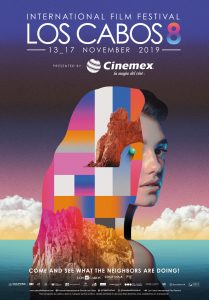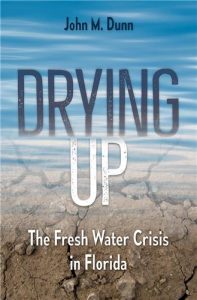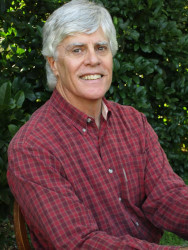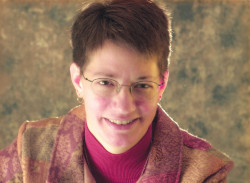Posted by Elena del Valle on January 15, 2020

The Victim, a Scottish thriller
Photo, videos: courtesy of KCET
KCET, a Southern California public station, will premiere Austrian, French and Scottish programming this month. The Victim, a four-part Scottish thriller series, Resistance, a French World War II series, and Vienna Blood, an Austrian mystery series will air locally beginning in January. After their on air premier the programs will be available on the station website. Scroll down to watch trailers.
The Victim first aired in the United Kingdom on BBC One April 2019. The engaging and thought provoking thriller explores age old issues of whether the punishment fits the crime as well as the new ethics of individual responsibility for posts on social media. It stars Kelly Macdonald (Boardwalk Empire, No Country for Old Men) as Anna Dean who is accused of leaking her son’s suspected murderer’s identity online and conspiring to have him killed. John Hannah (Four Weddings and a Funeral, Agents of S.H.I.E.L.D.) plays Craig Myers, a hard working family man seeking prove his innocence.
The first episode aired January 7, 2020. Resistance is scheduled to air Tuesday, January 14 at 10 p.m. PT and Vienna Blood should air January 23 at 10 p.m. PT.
Resistance, based on true events, (in French with English subtitles) portrays the story of “a group of young French heroes fighting for freedom from German Nazi occupation in World War II” who join forces to produce a newspaper. According to a press release, the program is part of Walter Presents, a curated collection of award-winning international dramas hand-picked by Walter Iuzzolino, “a TV connoisseur who has scoured the globe for compelling hits.”
In Vienna Blood, reminiscent of Sherlock Holmes with some elements of romance, a student of medicine and Sigmund Freud and an Austrian detective team up to solve murder cases in early 1900s Vienna. It features Matthew Beard (The Imitation Game) and Juergen Maurer (Vorstadtweiber). The final four episodes were my favorites.
According to promotional materials, KCET offers cultural and educational programs in Southern and Central California, including local programming and television programs from around the world. Throughout its 54-year history, KCET has won hundreds of major awards.
Posted by Elena del Valle on January 6, 2020

Gaby Lechin, senior vice president, Global Results Communications
Photo: Global Results Communications
A podcast interview with Gaby Lechin, senior vice president, Global Results Communications, is available in the Podcast Section of Hispanic Marketing and Public Relations, HispanicMPR.com. During the podcast, she discusses public relations trends and predictions with Elena del Valle, host of the HispanicMPR.com podcast.
Gabriela’s communications career spans 18 years and includes extensive and global experience in the tech, cybersecurity, intelligence, transportation, government, and sports industries as well as global affairs, international relations and crisis management. A United States Navy Reserve Officer, Gaby holds a bachelor’s degree in communications and a master’s degree in national security and international relations.
To listen to the interview, scroll down and click on the play button below or locate the “Podcast” section on the right hand side, then choose “HMPR Gaby Lechin” or download the MP3 file to your iPod or MP3 player to listen on the go, in your car or at home from the RSS feed. Some software will not allow flash, which may be necessary for the podcast player. If that is your case, you will need to download the file to play it. To download it, click on the arrow of the recording you wish to copy and save it to disk. The podcast will remain listed in the January 2020 section of the podcast archive.
Posted by Elena del Valle on December 18, 2019

Left to right: Jennifer Lopez, Eddie Murphy with Antonio Banderas and Brad Pitt
Photo, video: PBS SoCal and Variety
For fans of actor interviews PBS SoCal, a donor-supported community institution and part of Public Media Group of Southern California, will air Variety Studio: Actors on Actors, an Emmy Award-winning series co-produced by PBS SoCal in its eleventh season, nationwide beginning January 2, 2020. The distinctive characteristic of the 30 minute programs is actors interviewing actors. The four episodes of the new season will premiere back-to-back on PBS SoCal at 8 p.m. Following their premieres they will be available for streaming on pbssocal.org on the free PBS Video app. Scroll down to see a series trailer.
Episode participants are: Tom Hanks (A Beautiful Day in the Neighborhood) with Renée Zellweger (Judy), Brad Pitt (Once Upon A Time in Hollywood) with Adam Sandler (Uncut Gems) and Awkwafina (The Farewell) with Taron Egerton (Rocketman); Antonio Banderas (Pain and Glory) with Eddie Murphy (Dolemite is My Name), Chris Evans (Knives Out) with Scarlett Johansson (Marriage Story) and Mindy Kaling (Late Night) with Constance Wu (Hustlers); Adam Driver (Marriage Story) with Charlize Theron (Bombshell), Cynthia Erivo (Harriet) with Alfre Woodard (Clemency), Shia LaBeouf (Honey Boy) with Kristen Stewart (Seberg); and Jennifer Lopez (Hustlers) with Robert Pattinson (The Lighthouse), Laura Dern (Marriage Story) with Sterling K. Brown (Waves), and Beanie Feldstein (Booksmart) with Florence Pugh (Little Women).
The series received the 2019 national Daytime Emmy Award. According to promotional materials PBS SoCal is the “flagship PBS station for 19 million diverse people across California formed by the merger of PBS SoCal and KCET.” The station’s programs are accessible for free through four broadcast channels, and available for streaming online, on the PBS mobile apps, and via connected TV services Android TV, Roku, Apple TV and Amazon Fire TV.
Variety’s Actors on Actors issue hit newsstands November 12 and clips appeared on Variety.com. According to promotional materials, “Variety is the seminal voice of the entertainment industry and has been for over 114 years.” It features breaking news reporting, award-season coverage, feature spotlights and analysis of some of the industry’s most prominent players. The Variety Group is owned by Variety Media, LLC, a division of Penske Media Corporation.
Posted by Elena del Valle on November 20, 2019
By Gabriela Lechin
Senior vice president
Global Results Communications

Gabriela Lechin, senior vice president, Global Results Communications
Photo: Global Results Communications
Despite accounting for less than 20 percent of the United States population, Hispanics accounted for 82 percent of the United States labor-force growth participation between the years 2010 and 2017. Gross Domestic Product (GDP) among Hispanics in America grew at a faster rate than the overall United States economy during this time, increasing from $1.7 trillion in 2010 to $2.3 trillion in 2017, according to the 2019 LDC U.S. Latino GDP Report by the California Lutheran University, making it the third-highest growth rate among all global economies during that period on a compounded annual basis. Some of the main influences powering this performance are Hispanics healthy growth in population, their increasing consumer spending and high labor-force participation. According to the report, the financial contribution of the Hispanic community in America will become progressively significant in the upcoming years of the country’s economy.
Click to read the entire Guest Article by Gabriela Lechin: Finding the silver lining in cultural appropriation
Posted by Elena del Valle on November 12, 2019

2019 Los Cabos International Film Festival poster
Image: Los Cabos International Film Festival
The organizers of the 2019 Los Cabos International Film Festival in Los Cabos, Baja California Sur, Mexico hope to draw more than 13,300 attendees, 30 percent of them from the United States, to their event to be held at the Cultural Pavilion in Cabo San Lucas November 13-17, 2019. Attendees are expected to be film industry executives from Mexico, United States, Canada, Europe, South America and Asia, including filmmakers, actors, producers, sales agents, film programmers, film critics, government and cultural authorities, as well as local and foreign film fans.
Some 42 films are expected to participate in the event. Los Cabos Arte y Cultura, the nonprofit organization behind the festival, is headed by Alfonso Pasquel Bárcenas, according to a spokesperson for an area property.
According to a press release the festival was founded in 2012 by Scott Cross, Sean Cross, Eduardo Sanchez-Navarro Redo, Alfonso Pasquel, Juan Gallardo Thurlow, Eduardo Sánchez-Navarro Rivera Torres, and Pablo Sanchez-Navarro. The annual event was created to foster exposure for the “Mexican film industry and it’s up and coming filmmakers.” A list of films and show times is available on the bilingual festival website, cabosfilmfestival.com
Posted by Elena del Valle on November 6, 2019

Drying Up
Photos: John Dunn, Susan Dunn
Florida is approaching a crisis. The peninsula surrounded by water on three sides and with more coastal miles than any continental state save Alaska may not have enough water to serve the needs of existing residents, new residents and tens of millions of visitors in the coming years. While water issues are not new they have grown worse, according to John Dunn, author of Drying Up: The Fresh Water Crisis in Florida (University Press of Florida, $24.95).
Drawing on more than one hundred interviews and years of research he points out that pollution, failing infrastructure, increasing outbreaks of toxic algae blooms, and pharmaceutical contamination are worsening water quality. Climate change, sea level rise, and groundwater pumping are spoiling freshwater resources with saltwater intrusion. Shortages have prompted fights over rights to the Apalachicola River, Lake Okeechobee, and the Everglades among other important watersheds.
Population growth is accelerating a difficult situation, he says. In the not too distant future water scarcity may force municipalities to offer residents toilet-to-table “reused water.” In the book, he outlines the history of water in the Sunshine State and some of the most salient fresh water concerns.
“I am a native Floridian, veteran freelance writer, teacher, and environmental activist,” the author replied by email when asked what prompted him to write the book now. “With these perspectives it hasn’t been hard for me to detect the degradation of our water resources over the years. They aren’t new. They are only growing worse. A friend of mine Cynthia Barnett, a former staffer with Florida Trend Magazine, caught the attention of many Floridans about a decade ago with her book, Mirage. Unfortunately, there has been little improvement addressing our water issues.
I originally queried the editorial staff of the University Press of Florida (UPF), wanting to write a Florida-specific book on climate change. UPF already had such a book in production. But the editor asked me if I’d like to write a different one on Florida’s water woes instead. I’d written on water issues for magazines in the past. In addition, I’d worked with various conservation groups. So, I had a background in water issues and experience which I could draw on. I submitted up a book outline and got a contract.”
From idea to publication the hardcover book took Dunn two and a half years to complete. He wrote for general readers, relying on a magazine style of writing to make it reader friendly. The book struck a cord because he has received many invitations for book presentations across the state, including the Miami Book Fair this month.
“During the Q&A at these presentations, I’ve noticed that many people, especially those that have recently moved here, are either surprised or shocked to realize how impaired our waters are,” he said.
How soon should we expect the toilet-to-table water stage in Florida? “Experts told me it will be at least a decade from now, if that soon, before many Floridians are able to get over the ‘yuk’ factor associated with drinking recycled or ‘reuse’ water. One way of reusing waste water is the indirect method. This is the what many people in Tampa would like to explore; that is, pumping treated wastewater deep into the ground beneath the ‘shallower aquifer’ (from which we extract drinking water). There, presumably, the sunken, treated water will mix with existing ground water and get an extra dose of filtration as it moves through the subterranean world before it is extracted topside as drinking water.
The other method is to treat wastewater with advanced methods and then pipe it directly to a facility where it is blended with the utility’s water supply. Astronauts use this method in outer space when they treat and recycle their own urine. The people of Singapore, facing critical water shortages, now drink this direct potable ‘reuse’ water, which they call NEWater.”

John Dunn, author, Drying Up
When asked what he would like to accomplish from writing the book he said, “I hope my book provides a ‘primer’ for readers which will give them the confidence to become citizen water activists. Anyone contemplating a move here, especially those hoping to do business in the state, should investigate both the availability and reliability of water supplies.They also need to evaluate the impact their own possible arrival could make on Florida water. Americans are used to thinking about their ‘Carbon Footprint.’ Increasingly here in Florida and the world, people are realizing they must also now calculate their ‘Water Footprint.’
As I’ve explained in Drying Up, Central Florida is already drawing water faster from the ground than it is being recharged by rainfall. South Florida is not far behind in being in the same situation.”
What can Florida residents do to secure clean water in the coming decade? “The biggest problem to Florida’s water supply is our growing population, along with public indifference and the current ‘business as usual’ approach to economic activity,” the author said. “For too long, the Florida Growth Machine, developers, bankers, realtors, and their compliant political allies, have viewed Florida as a commodity, a place to be consumed for a profit. Currently, the Miam/Dade (Miami/Dade) County Commission is paving the way for construction of the largest mall in the country. The $4 billion retail and entertainment complex will be built on the edge of the Everglades. It will even provide artificial snow so shoppers can ski. This, in a subtropical setting that will face water shortages in the near future! Such insanity runs rampant in our state.
In my lifetime, I’ve seen Florida’s population jump from 2 million to 22 million. We now receive over 120 million tourists annually. The 1000 Friends of Florida 2017 study suggests that if present demographic trends continue, Florida could add another 15 million by 2070. By then, much of the state is likely to be swamped by sea level rise.
Floridians who worry about securing fresh water need to be mindful of the plight of their water supply right now. It’s amazing to me that the nation gets excited about spending billions of dollars looking for a drop of water on Mars or the moons of Saturn with the hope it could suggest the existence life, while simultaneously wasting fresh water on earth with abandon.
All of us are guilty of squandering water. Floridians use 50 percent of the state’s fresh water supply irrigating their lawns every day. Every time we flush a toilet and fertilize our yards we contribute to the ‘nutrient’ contamination of fresh water by fueling algae growth. Every time we soak our lawns with pesticides, we pollute groundwater. Every time we clear-cut Florida’s forests, wetlands, and natural vegetation, or dig canals, change the contour of the earth, and plaster the ground with asphalt and concrete, we cause the greatest damage of all to our fresh water supplies. That’s because we destroy Florida’s natural hydrologic systems. When we do this, we literally disrupt the natural evaporation, drainage and percolation of water to the aquifer.
Every day our fresh water is also being polluted from industry, storm water runoff, and aging sewage systems and water treatment plants. Meanwhile, climate change is causing extreme flooding, rising sea levels, and perhaps occasional periods of drought. All of these forces contaminate fresh water wells.
Finally, I think, Floridians need to adopt a more enlightened ‘Soft Path’ approach to water which I’ve described in the book. These means restoring wetlands and natural hydrologic systems, mimicking nature, and increasing the use of conservation and recycling. It calls for the water management districts to stop giving out new water pumping permits like library cards. It also means a shift in values. Water shouldn’t be a commodity. It is, after all, the unique, perhaps, divine substance that gives rise to life on earth.
Floridians must elect only those who also understand the natural world and will fight to protect our natural resources, not exploit them. Otherwise, developers, big business, fracking interests, and large-scale agriculture operations (ranging from the growing of sugar cane to raising cattle), will be the main water policy makers.
I hope my book will help bring about these goals.”
Dunn, a native of Miami, is a working freelance writer and journalist and a veteran high school history teacher. He has published over 350 articles for more than twenty periodicals as well as young adult books. A member of the Silver Springs Alliance, Dunn has worked for years with other volunteers to address many of Florida’s pressing environmental problems. He lives with his wife Susan in Ocala, Florida.

Minuscule commissions earned from Amazon. Links included mostly for reader convenience: Click to buy Drying Up
Comments:
Filed Under: Books
Posted by Elena del Valle on October 30, 2019

The Pollinators poster
Cinematographer Peter Nelson dedicated countless hours to filming bees, traveling to 14 states, following bee managers and their bees; and interviewing 26 people in the making of The Pollinators, a 92-minute film about bees and their role in agriculture today. Its festival premiere was at the Big Sky Documentary Film Festival. To date it has been screened at 18 festivals. He has already taken home seven festival awards. Scroll down to watch a trailer for The Pollinators*.
When asked by email what prompted him to make a film now he said, “I am a backyard beekeeper for over 30 years now and also a cinematographer by profession. I also have a great interest in food and agriculture and felt the story of migratory beekeepers and our dependence upon managed honey bees was not well known I was compelled to tell this story due to a collisions of all these passions.
Losses among commercial beekeepers are very high and range from 30 to 50 percent or more. This is not sustainable long term and this matters to all of us because us our dependence upon the managed bees for so much of our food. One of every three bites is something pollinated by a bee, so this is really important if you like to eat. We are in a time of peril for the bees (and also many other insects) and I wanted to take a look at this and tell this story.”
The target audience? Beekeepers, of course as well as people interested in the environment, farming, foodies and gardeners. The film includes bee close ups and beautiful images of the insects in flight as well as disturbing shots of thousands of dead bees.

Peter Nelson, director, The Pollinators
“Filming bees was a challenge, but also a lot of fun,” the filmmaker said. “I wanted to try and show bees in a way I had not really seen before as the wonderful beautiful insects they are. Many people are afraid of bees and I understand that as they are a stinging insect. Unlike yellow jackets, honey bees will sting only as a last resort and they die in the process so honey bees are not aggressive for the most part. Honey bees are also incredibly beautiful and complex creatures and I wanted to try and show bees to audiences in a new way and share how wonderful and graceful honey bees really are. I used a lot of very high speed photography (up to 1560 frames per second) to show bees in super slow motion flying, taking off, landing and just being beautiful in their natural environment.
Bees fly really fast and so are very challenging to film, especially in macro close up. My experience as a beekeeper for many years, gave me an advantage with this by understanding a bit about bee behaviors and the way they fly, land and their rhythms to some extent. It also required a lot of patience and a steady hand to keep the bees in focus at such shallow depth of fields.
I used Vision Research Phantom cameras and macro lenses provided by AbelCine for the ultra slow motion. The specialty cameras were provided by AbelCine as part of a grant for this project. My main camera was a Canon c300 Mk II and a 17-120 cinema zoom which I own and also some prime lenses for night. I also cannibalized one of my backyard bee hives to be able to stick a lens right inside the hive for a unique view of the bees inside their homes.”
Regarding funding and support he said, “We have a tremendous amount of sweat equity and some personal funding in the film. Being a cinematographer, I could go shoot pretty much as I needed to so was able to respond quickly to developments and shoot as needed. We also had some early financial support from Burt’s Bees, The Schumann Media Center helped us with funding. We also won a Doc Pitch competition from the Paley Center.
AbelCine gave us an ‘in-kind’ grant towards specialty camera equipment and lenses. Michael Reuter, the editor, producer and co-owner of EditBar helped us tremendously in post production right through completion.”
The only people who were paid were crew members for their services, he said, and no one who appears in the film was compensated in any way for his or her appearance nor was anyone paid for access.
“I wanted to bring this important story to audiences, to try and connect people to their food, where it comes from and a bit of what is involved in growing it,” he said when asked what he hoped to accomplish. “I also wanted to raise awareness and try to explain some of the causes of pollinator decline. If we can connect dots for people about the role of pollinators to our food system in some way, I would consider that a success.”
The producers were Sally Roy, Peter Nelson and Michael Reuter. Nelson was director of photography. At the time of this writing the project leaders were starting a theatrical release through Demand.Film, a crowd sourced distribution platform designed to make films available to cinemas across the United States, Canada, Australia, New Zealand, United Kingdom, Ireland and Germany over the next months. The goal is for the film to screen in one day events across the country in many places that would not likely screen independent documentaries. A national day of screenings is planned for Nov 6, 2019 in the United States (more at //us.demand.film/the-pollinators/). Broadcast, streaming, video on demand (VOD) and educational distribution venues have not been determined yet.
*Photos, video: Poster image and video courtesy of Peter Nelson, photo of Peter Nelson courtesy of Eric Krieger
Posted by Elena del Valle on October 14, 2019

Michele Colopy, program director, Pollinator Stewardship Council
Photo: Michele Colopy
A podcast interview with Michele Colopy, program director, Pollinator Stewardship Council is available in the Podcast Section of Hispanic Marketing and Public Relations, HispanicMPR.com. During the podcast, she discusses honey and beekeeping with Elena del Valle, host of the HispanicMPR.com podcast.
Michele has held her current position since March 2013. Her father was a beekeeper in southeast Ohio. She keeps honey bees in the city, and has replaced her crabgrass front yard with pesticide-free pollinator flowers for her honey bees and native pollinators. Her nonprofit experience includes work in the performing arts, housing and homelessness, foreclosure prevention, community development, and health and wellness.
To listen to the interview, scroll down and click on the play button below or locate the “Podcast” section on the right hand side, then choose “HMPR Michele Colopy” or download the MP3 file to your iPod or MP3 player to listen on the go, in your car or at home from the RSS feed. Some software will not allow flash, which may be necessary for the podcast player. If that is your case, you will need to download the file to play it. To download it, click on the arrow of the recording you wish to copy and save it to disk. The podcast will remain listed in the October 2019 section of the podcast archive.
Posted by Elena del Valle on October 8, 2019
By Isabel Rafferty
CEO
Canela Media

Isabel Rafferty, CEO, Canela Media
Photo: Canela Media
In this age of social media and personal branding, people are more attuned than ever to the PR-speak, photo-shopped images and marketing tactics that brands engage in. As a result, audiences have shown an affinity towards those brands that present a more “authentic” version of themselves – that is to say, a version that takes a more active role in addressing real world issues and promoting diversity. As a result, many brands have looked to influencer marketing to bring them additional credibility. However, as consumers grow increasingly cynical not only of brands but of the influencers who peddle their products, brands have to find new ways – and new influencers – to increase trust.
Click to read the rest of Micro-Influencers Are the Future of Marketing
Posted by Elena del Valle on September 30, 2019

Tom McMakin, co-author, How Clients Buy
Photo: Carlie Auger
A podcast interview with Tom McMakin, co-author, How Clients Buy A Practical Guide to Business Development for Consulting and Professional Services (see Executives discuss how clients buy services) is available in the Podcast Section of Hispanic Marketing and Public Relations, HispanicMPR.com. During the podcast, he discusses how clients buy professional services with Elena del Valle, host of the HispanicMPR.com podcast.
Tom is chief executive officer and partner of Profitable Ideas Exchange (PIE). Before joining PIE, he was co-founder and managing director, Orchard Holdings Group, a private equity firm based in Cincinnati, Ohio. He also served as an operating affiliate at McCown DeLeeuw and TSG Consumer, two consumer-focused buyout groups in San Francisco. Prior to working in private equity, he was the chief operating officer of Great Harvest Bread Co., a multi-unit operator of bread stores based in Dillon, Montana.
To listen to the interview, scroll down and click on the play button below or locate the “Podcast” section on the right hand side, then choose “HMPR Tom McMakin” or download the MP3 file to your iPod or MP3 player to listen on the go, in your car or at home from the RSS feed. Some software will not allow flash, which may be necessary for the podcast player. If that is your case, you will need to download the file to play it. To download it, click on the arrow of the recording you wish to copy and save it to disk. The podcast will remain listed in the September 2019 section of the podcast archive.





















